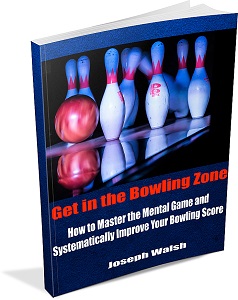When it comes to the equipment and accessories needed for bowling, it’s likely that a few specific things come to your mind.
A bowling ball, of course. Bowling shoes too, then maybe a glove or wrist support. A notebook, on the other hand, is unlikely to earn a spot on your list.
But perhaps it should be, as notetaking can be an important part of improving as a bowler.
You may think this sounds a little strange. After all we’re talking about bowling, not taking a test in school.
But notetaking in some form can be a huge help in the long run. This article will explain why.
What to Take Notes on in Bowling
Notetaking for bowling looks a little different from the way we jot down details in other contexts. In most cases it will look pretty heavily numerical: a good starting point is to record your starting spot, the target you threw at, where the ball hit the pins and the result (ie. strike or what pins were left).
Taking notes on which pins you leave and what spares you pick up gives you a wealth of valuable information.
Making sure to focus your notes on lane conditions is an especially useful practice, especially as conditions change over the course of your bowling session. Are you starting to come in heavy or light? Is a technical problem causing you to miss your target? Do you detect any changes to your ball speed?
If you’re facing sport patterns or other conditions that frequently change, then notes on your reads and how the lanes respond is especially crucial. If your environment is more like the same house shot every week, then you’ll want to focus on how those conditions transition within the bowling session.
Overall, as you’re deciding what notes to take, try to strike a balance between being thorough but not too tedious, as you don’t want to try to do too much if it’s going to take the attention away from your actual bowling.
Finally if you use multiple balls in your arsenal, make sure to specify the type of reaction you are getting from each one. (This can also help remind you when it may be time to add surface to your ball.)
Many bowlers also take notes during their practice sessions much in the same way.
But don’t forget that learning how to make adjustments “in the moment” is the crucial piece, so use your notes as a way to keep sight of the big picture.
Notes After a Bowling Session: the Benefits of Self-Reflection
In the moment you often have valuable insights about your play that you will likely forget as time passes. So dedicating a few minutes to reflection after your session is extremely useful for continuous improvement and improved consistency.
This isn’t just about tracking your starting position, target and pinfall, but can be a more holistic way to evaluate your mindset, positive and negative emotions, and potential distractions. How were you feeling at the beginning of your session? When things got difficult, how did you react? Also this helps you make sure your day to day actions are aligning with your longer-term bowling goals.
Doing this type of notetaking may not be for everyone, but it can help you cultivate a more mindful approach to your play. And for more on the thinking side of the game game, take a look at our bowling mental game ebook.
Best Ways to Take Notes During Bowling
Some bowlers prefer the old-fashioned method of pen and paper. Others might use a notetaking app on their phone since that is likely already in their pocket and is easy to keep with you on the lane.
Most leagues, of course, keep track of your accumulated scores for you and provide you some information on your play, but not at the level of breaking it all down on a frame by frame basis, and of course with none of the additional insights pertaining to your own shot.
For your notetaking, you can choose from a variety of bowling-specific apps that are out there to track scores and manage your games.
Some that we’ve seen consistently recommended by bowlers include Best Bowling, PinPal, and My Bowling Scoreboard. Each tracks information slightly differently (and many cost a few bucks although there are some free ad-supported apps too) so we recommend trying a couple and seeing what “clicks” most for you and your workflow.
But if those don’t seem to be a good fit for you, a general notetaking app like Evernote and/or an Excel or Google spreadsheet can work too.
It’s not necessarily about which tool is “best” but rather what you’ll be able to commit to as a long-term habit and a method that gives you the information that’s useful to you.
Do you take notes during your bowling games? If so, let us know what you like to track and how you do it.



Leave a Reply